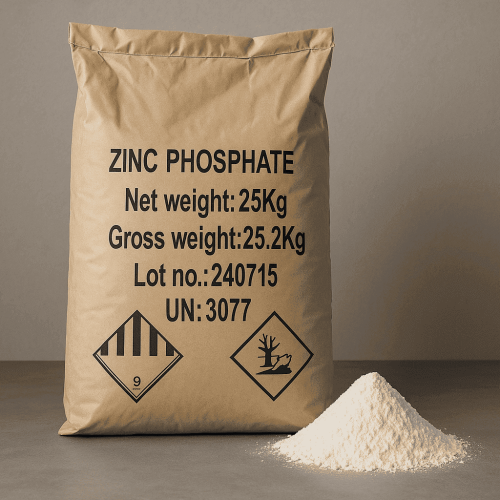Zinc Phosphate
- - paint-additives
| Specifications | Values | |
|---|---|---|
| CAS Number | 7779-90-0 | |
| Chemical Formula | Zn3(PO4)2 | |
| Appearance | White powder | |
| Specific Gravity (24°C) | 3.3 | |
| Oil Absorption, g/100g | 20–24 | |
| pH | 6–8 | |
| Moisture Content, % | max 1 | |
| Zinc Oxide Content (ZnO), % | 50–52 | |
| Phosphate Content (PO4), % | 48-50 | |


